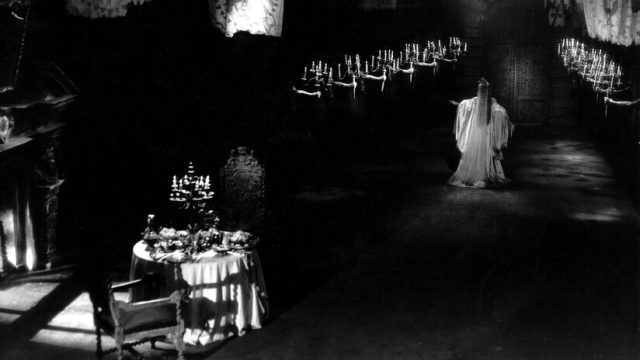When considering the core text of “Beauty and the Beast,” as much as there is a core text, we should perhaps start, as a professor of mine once did, with the difference between fairy tales and folktales. Folktales are old stories, told generation after generation, only written down later in their evolution. They share so many familiar themes and tropes there’s an index devoted to them. (That index, known as the ATU index, deals only with European folklore, which is a story for another day). A fairy tale is different, a story with a single author, usually known, written down for children or court ladies or another specific audience. Hans Christian Andersen and Oscar Wilde and Jeanne-Marie Leprince de Beaumont wrote fairy tales. They may borrow lightly, or heavily, from folklore, but they have a distinct voice in a way a folk tale does not.
The story of Beauty and her Beast started as a novel-length work by Gabrielle-Suzanne de Villeneuve, which was later adapted by de Beaumont into a shorter work. Both these tales draw on older folktales about animal brides and grooms, with a lot in common with the German Singing, Springing, Lark and the mythological Cupid and Psyche, but there’s a specificity of detail in the retellings that separates these stories from folktales. (Though it’s probably not a coincidence that de Beaumont’s story, a much shorter and less detailed work, is the one that persisted in the popular imagination.)
Cocteau began work on Beauty and the Beast at the behest of his lover and muse Jean Marais (I’ve written previously about their creative and romantic partnership). But the narrative of the finished product is clearly stamped with Cocteau’s signature and perspective from the opening preamble breaking the fourth wall and reintroducing the viewer to magic, a notion that was likely in short supply in 1946 France, still recovering from the wounds of World War II. Where films like The Best Years of Our Lives took the war head-on, Beauty and the Beast chooses to address pain and alienation through metaphor. Unable to shoot in color due to the stresses of the postwar period — the cast and crew began filming only four months after the German surrender — Cocteau pulled in a team of experts to help with technical aspects, costumes, and makeup. Marais’s prosthetic face, modeled (after much deliberation) on Marais’ Alaskan Husky, took hours to apply.
The result is singular. Beauty and the Beast plays like a dream, from the misty roads Belle’s father travels to the many carefully worked special effects. The viewer is invited in, not to a theme park spectacle, but to something warm and intimate. We sit at the absurdly large dinner table with Belle. The squabbles of her selfish sisters are as familiar as the fights in our own families. No wonder viewers were reluctant for the journey to end (legend has it that Marlene Dietrich called to have her Beast returned at the end of the film).
Forty-five years later, the Disney Beauty and the Beast came to theaters. Unlike its predecessor, the animated treatment of the tale is long on spectacle. The sense of quiet wonder we feel when Belle sits down at the table is replaced by a raucous song-and-dance number sung by a candlestick and a teapot. Of course, these movies have different aims as well — the 1991 Beauty and the Beast is the heir to a legacy that started even before Cocteau made his first film. There are little details that nod at Cocteau’s version, though, including the all-too-human furniture and the introduction of a romantic rival for Belle. (While no one fights like Gaston, Avenant — played by Marais, who also plays the transformed Prince — has a charisma and menace that’s equally memorable.)
But while one film is moody and dreamlike and the other bright and colorful, they both tackle the damage adults can do to children, the way humans treat the Other, and they both echo the stresses and pain of their era. When Cocteau filmed his version in 1946, he was occupied with the lasting damage of war. When lyricist and creative force Howard Ashman worked on Beauty and the Beast, he had already received a diagnosis of AIDS, a death sentence from a pandemic that the world had mostly agreed to ignore. Half a century apart, two queer men used their own experiences and pain to tell a heterosexual love story that felt universal.
In fact, Cocteau’s work has had a long reach. Rumor had it that his version kept Walt Disney from adapting “Beauty and the Beast” in the ’40s and ’50s. Its influence can be seen in a thousand magical worlds, especially those that seem just a step away from our own. This “tale as old as time” feels timeless, even now.
Roger Ebert considered Beauty and the Beast one of his Great Movies; here’s his essay appreciating the work.

